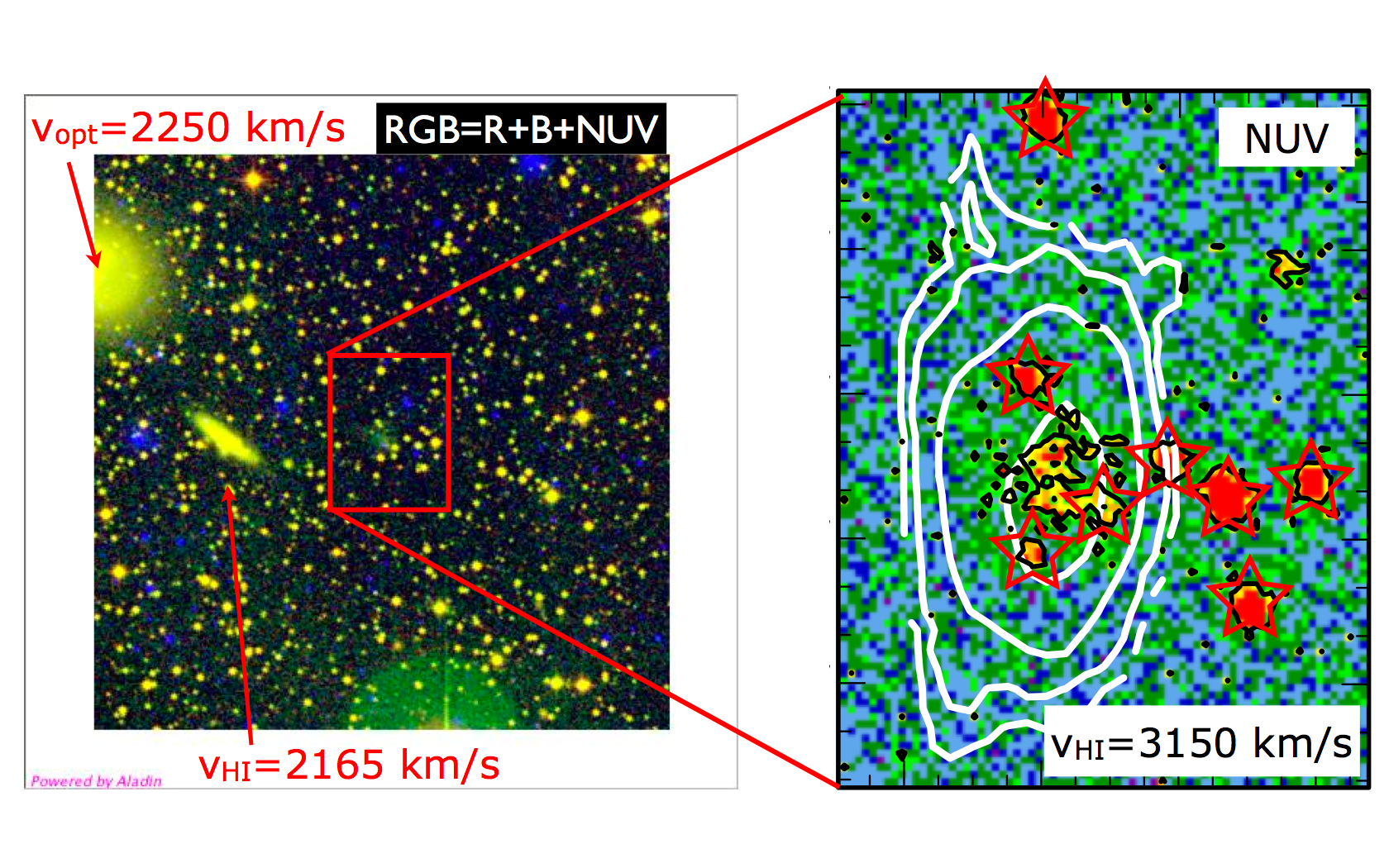Daily Image
10-06-2009Dwarf and lonely: a serendipitous HI discovery
| Submitter: | Paolo Serra |
| Description: | During the past one and a half year, a large fraction of the WSRT observing time has been devoted to a survey of neutral hydrogen gas (HI) in the Atlas3D sample of early-type galaxies ( http://www-astro.physics.ox.ac.uk/atlas3d/ ). Thanks to the large field of view and bandwidth of these WSRT observations, we can actually detect HI in a much larger volume of the Universe than just the immediate surroundings of each observed galaxy. This opens up the possibility of exciting serendipitous discoveries. Indeed, while looking for HI around a large lenticular galaxy belonging to the Atlas3D sample we discovered a bright HI cloud of 200 million solar masses whose recessional velocity is ~1000 km/s larger than that of our original target. This velocity difference is likely too large to be caused by a relative motion between the cloud and our early-type target. Instead, interpreting it in terms of Hubble flow, we estimate that the HI cloud is at a distance of 14 Mpc from the lenticular galaxy along the line of sight. Furthermore, the closest catalogued galaxy at similar recessional velocity lays ~1.5 Mpc away from the HI cloud (projected on the sky), making it an extremely isolated object. Interestingly, the HI cloud is projected on a region of the sky which appears, at first glance, empty. A star-less galaxy? Of course not! After closer inspection we were able to find some very faint, blue, diffuse stellar light right where the peak of the HI column-density is. This stellar emission, corresponding to ~100 million times the solar luminosity, is visible in the centre of the left figure above. The RGB image is built combining DSS red, DSS blue and GALEX near-UV images of the field. The large object partially visible on the east (left) is the lenticular galaxy, and the inclined object more to the south-west is a companion. The recessional velocity of the two objects is ~2200 km/s. The right image shows a zoom-in of the near-UV stellar emission detected by GALEX at the location of our HI cloud. We plot in white constant column-density contours of the HI emission, whose velocity is 3150 km/s. In the image, red stars indicate the UV emission from foreground stars. If the UV emission associated to the HI cloud comes from young stars, it corresponds to a star-formation rate of 0.001 solar masses per year. At this rate, it would take this galaxy 10 times the life of the Universe to turn all the observed HI into stars! The isolation of this dwarf galaxy, its high HI content and low star-formation rate make it a very interesting case to be compared to dwarf galaxies in the Local Group, the better studied objects of this kind. Is this galaxy really isolated? If yes, how has this affected its evolution and star-formation history? Is the existence of such object in agreement with theoretical prediction of galaxy formation? We are currently analysing new HI and optical data to address some of these questions and understand in more detail the nature of this exciting object. |
| Copyright: | Atlas3D team |
| Tweet |  |
